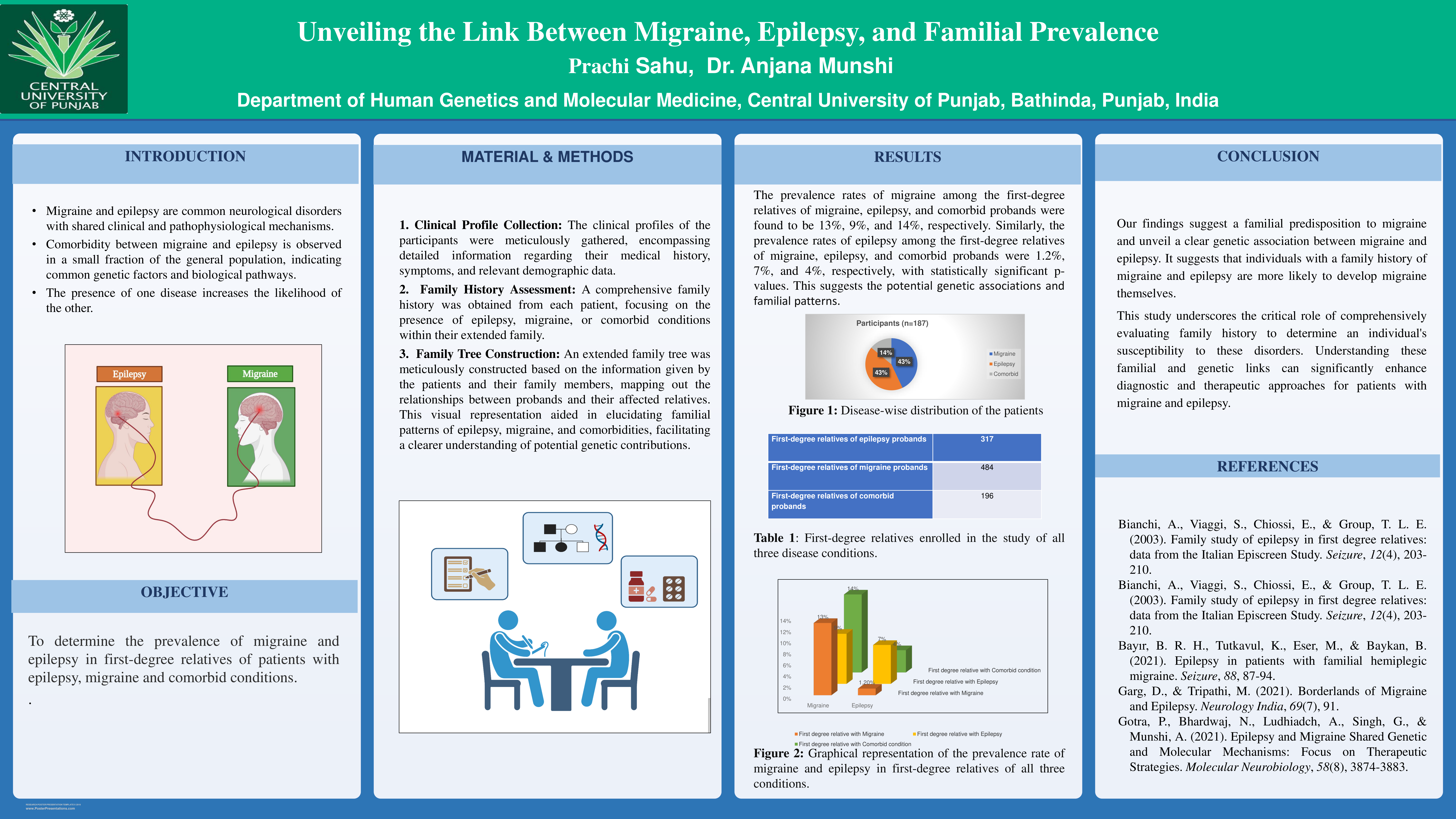Prachi Sahu
Conference 2024 Poster
Poster Title
Unveiling the Link Between Migraine, Epilepsy, and Familial Prevalence”
Authors and Affiliations
Prachi Sahu¹, Anjana Munshi¹, Gagandeep Singh²
1 Department of Human Genetics & Molecular medicine, Central university of Punjab, Bathinda, India
2 Department of Neurology, Dayanand Medical College & Hospital Ludhiana, India,
Abstract
Background
Migraine and epilepsy are prevalent episodic neurological disorders with shared clinical and pathophysiological mechanisms. Comorbidity between migraine and epilepsy is observed in a small fraction of the general population, indicating common genetic factors and biological pathways. Presence of one disease increases the likelihood of the other. This study aimed to investigate the prevalence of migraine and epilepsy in first-degree relatives of individuals with epilepsy, migraine, and comorbid conditions.
Methods
Detailed clinical profiles and family history were collected, and extended family trees were constructed. The study included 80 probands with idiopathic generalized epilepsy, 80 with migraine, and 27 with comorbid conditions, as well as 317, 484, and 196 first-degree relatives of each of these probands, respectively.
Results
The prevalence rates of migraine among the first-degree relatives of migraine, epilepsy, and comorbid probands were found to be 13%, 9%, and 14%, respectively. Likewise, 1.2%, 7%, and 4%, respectively, were the prevalence rates of epilepsy among the first-degree relatives of migraine, epilepsy, and comorbid probands with statistically significant p-values.
Conclusions
The study highlights a familial predisposition to migraine and suggests that individuals with a family history of migraine and epilepsy are more likely to develop migraine themselves. These findings underscore the genetic association between both disorders, providing valuable insights for understanding their shared etiology.


Leave A Comment